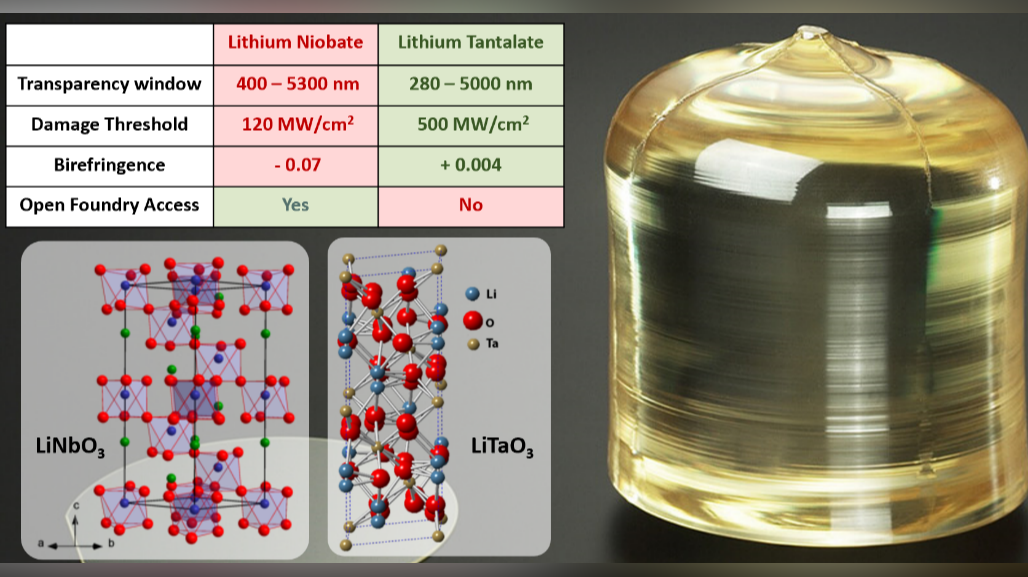Chip-scale optical frequency combs currently largely rely on the spontaneous formation of complex nonlinear states of light using third-order nonlinearities (Kerr effect) in high-Q micro-resonators that are pumped by a strong continuous-wave (CW) signal, leading to so-called dissipative Kerr solitons. However, two key challenges remain, preventing further penetration of Kerr soliton sources into applications: Firstly, the comb-line spacing being dictated by the circumference of the ring resonator. Secondly, besides cumbersome dispersion engineering in Kerr-comb resonators, the pump power required to generate Kerr combs is subject to an optical threshold, which in many cases is still prohibitive for many applications.
This project explores a novel ferroelectric material platform to overcome these limitations and tries to close the technology gaps that are still inherent to chip-scale comb-generator technology. The technological innovation is to establish lithium tantalate on insulator (LTOI) as a novel technology platform that combines second- and third-order optical nonlinearities in a common material system. Lithium Tantalate (LiTaO3, abbreviated LT) is a chemical and electrical analogue of Lithium Niobate (LiNbO3, abbreviated LN) with similar electro-optical properties but superior optical properties such as no optical birefringence and 5x larger optical damage threshold.
Luxtelligence has developed a technique to etch LN with ultra-low loss, using a scalable method that utilizes diamond-like carbon (DLC). This method is not only used for LN, but due to its superior selectivity and chemistry, applicable to other ferroelectrics such as LTOI. In this proposal, Luxtelligence aims to apply its etching technique to the novel LTOI platform and optimize it for this new material. The result will be ultra-low loss waveguide and ring resonators in LTOI that enable on-chip electro-optically tuneable frequency comb sources.

